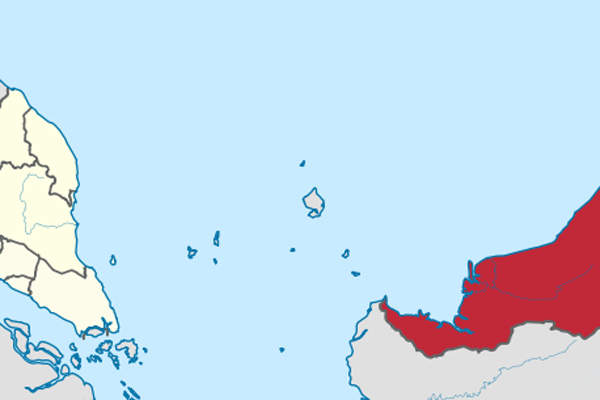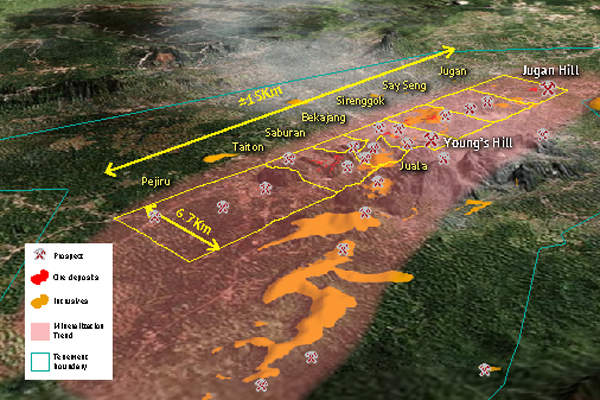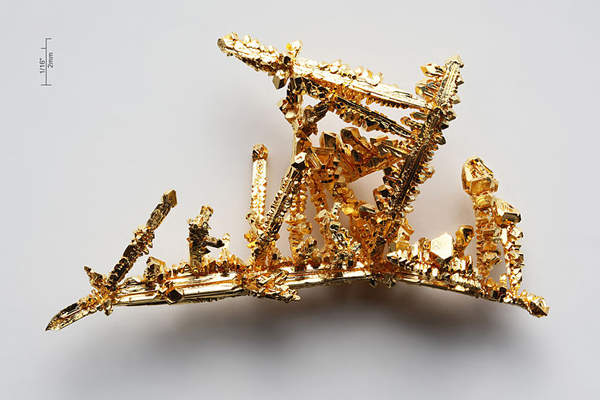
Canada-based company Besra Gold is developing the brown-field Bau gold project located in the Island of Borneo in Sarawak, Malaysia. The project is a part of the Bau Goldfield and is located within the township of Bau, approximately 40km from the state capital of Kuching.
Feasibility study for Stage I of the Bau project was completed in December 2013 and operations under the stage are expected to start in late 2015. The feasibility study is mostly based on the open-pit Jugan Hill deposit, located on the north-eastern side of the Bau Central gold trend.
Once operational, the project is forecasted to become the 13th biggest gold producing property in Asia.
Ownership of Bau gold project
Besra Gold, formally Olympus Pacific Minerals, manages the Bau Project through its partly owned subsidiary North Borneo Gold (NBG). Golden Celesta and Malaysian mining group Gladioli Enterprises (Gladioli) are the other shareholders of NGB.
Besra owns and controls 92.06% of the Bau project, while a local partner owns the remaining share. Besra also has an option to acquire the remaining share for payments between December 2013 and September 2015.
Bau gold project development stages
The first stage of the Bau gold project is expected to have an initial mine life of four years and will consist of an 8,000t/d processing plant. With an estimated investment of $134.8m, the first stage is expected to produce approximately 116,000oz of gold a year.
Feasibility study of Stage I (Jugan Hill) proposes to apply an optimum process involving crushing, grinding and floating to produce a gold-rich concentrate, which will be shipped for smelting and refining.
Stage II development is anticipated to extend the mine life to 12 years, thereby increasing the total production to more than one million ounces.
Bau gold project geology and mineralisation
The Malaysian gold project comprises tenements spread out in more than 1,340km² within the historic Bau Goldfield, which is located within the Borneo metalliferous belt. The belt contains a many other important gold mining areas such as Kelian, Mamut (gold-copper) and Mt Muro.
The exposed rocks in the Bau district are dominated by a sequence of late Jurassic to early Cretaceous-aged marine sediments comprising the Bau Limestone.
The goldfield is made up of four distinct mineralisation types known as disseminated sediment-hosted, silica replacement and breccias, magno-calcite quartz veining and porphyry-skarns.
Bau gold project reserves
The Bau deposit is estimated to contain proven and probable reserves of 10.66Mt grading 1.70g/t.
Mining and processing of ore from Bau mine
Conventional drilling and blasting method will be applied at the open-pit mine. The mine will be initially digged by using dozers and the material will be loaded onto haul trucks by using hydraulic excavators.
The mine plan proposes to develop the Jugan Hill deposit first, followed by BYG-Krian deposit and the rest of the extensive goldfield in and around Bau.
The processing plant is expected to produce at a rate of 8,000t of flotation concentrate a day (approximately 2.92Mtpa). The run-of-mine ore from the deposit will undergo crushing, grinding, flotation thickening and filter press dewatering processes resulting in the production of a flotation concentrate filter cake.
The produced concentrate will be dried, packed into bags, and taken to Kuching port for export to Asian smelters.
In future, the project anticipates recovering gold from the flotation concentrate filter cake in an outside smelting / processing facility.
Infrastructure facilities at Bau project
Power supply for the gold project will be provided by a grid owned by Sarawak Energy, the power generation and distribution utility of Sarawak District. A three-phase, 132KV transmission line will be constructed to connect the plant site to the grid.
Water will be collected from the main water pipeline running along the old Kuching-Bau road. Potable water will be supplied either in bottled form or from bulk coolers.
The tailings generated by the Bau plant will be deposited at the tailings storage facility located to the west of Jugan Pit and plant site by using sub-aerial technique.





